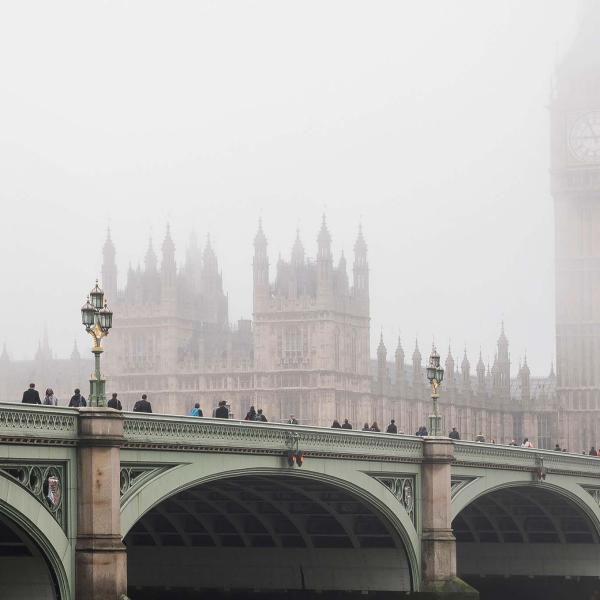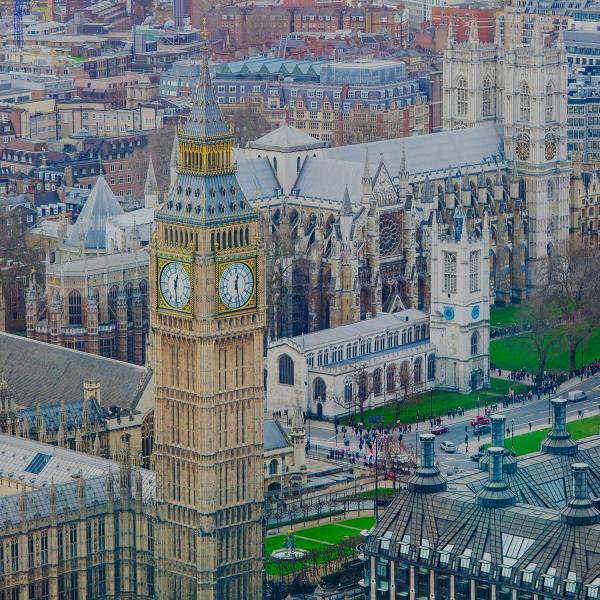IFS Director Paul Johnson says: “Rishi Sunak has been spending truly astonishing amounts of money this year and plans to continue to do so next year in response to Covid. Yet this was a spending review in which he reduced planned spending into the future, cutting more than £10 billion per year from departmental spending plans next year and for subsequent years. He has also allocated precisely nothing for Covid related spending after next year. And these plans assume that the temporary increase in Universal Credit will not continue beyond this year. Each of these assumptions is questionable. It seems more likely than not that spending will end up significantly higher than set out today, and so borrowing in 2024-25 will be considerably more than the £100 billion forecast by the OBR. Either that or we are in for a pretty austere few years once again, or for some significant tax rises.”
Public service spending
Public services have been allocated £113 billion this year in response to COVID-19. This is a truly eye-watering sum, equivalent to more than two-and-a-half times the annual defence budget, or more than £4,000 for every household in the UK. £55 billion of this is expected to continue into next year.
At the same time, the Chancellor has cut £10 billion from his previous plans for departments’ “core”, or non-COVID, budgets in 2021−22. Some – but not all – of this comes from a cut to the overseas aid budget and the public sector pay freeze. Even with this trimming of £10 billion from previous plans, departments’ “core” budgets are still set to grow by £14.8 billion (in cash terms) between this year (2020−21) and next (2021−22). The lion’s share (£9.6 billion, or 65%) of this will go to the NHS, schools and defence, with more modest increases elsewhere.
Importantly, this reduction in public service spending is set to persist into future years. In 2024−25, departments’ day-to-day budgets will be £13 billion lower than was planned in March. Given the government’s big commitments on the NHS, schools and defence, that implies an extremely tight funding situation for other public services for the remainder of the Parliament. Some areas could well be facing another round of cuts, on top of those already made over the last decade.
Ben Zaranko, a Research Economist at the IFS, said: “One notable feature of the Chancellor’s announcement was his decision to cut £10 billion from his previous plans for departments’ non-COVID budgets next year and beyond. Combined with the government’s promises on the NHS, schools and defence, this implies a tight settlement for other public services in the later years of this Parliament, with further cuts in some areas a real possibility.”
Investment and infrastructure
The Chancellor left his plans for capital spending largely unchanged – there was little in the way of new funding. Instead, what we largely saw was an allocation of the large sums that had already been announced. Public sector net investment is set to average 2.9% between 2021-22 and 2025-26, more than twice the 1.4% average seen over the past 40 years.
Public sector pay
The Chancellor announced a return to a policy of public sector pay restraint. All but the lowest paid non-NHS workers will have their pay frozen next year in cash terms, which will equate to a real-terms cut. Over the decade prior to the coronavirus pandemic, average public sector earnings fell by 1.3% in real-terms. Average teacher pay fell by 9%. But this year, public sector workers have been less likely to be furloughed or made redundant, and have had stronger pay growth than their private sector counterparts. By imposing a pay freeze, the Chancellor is seeking to reverse some of the pay trends seen this year.
Ben Zaranko, a Research Economist at the IFS, said: “This is not the first time that governments have sought to keep a lid on public sector pay rises. But unlike in 2010, this will come on the back of a decade of pay caps and freezes. Relative to pay in the private sector, public sector pay prior to the pandemic was its lowest point in more than 25 years.”
Welfare
One thing notably absent from the Chancellor’s speech was welfare benefits. In the wake of the pandemic the government temporarily expanded the working-age benefit system, with the biggest measure being an increase in Universal Credit (UC) of £20 per week. On current plans – which could be altered in the Spring Budget – that giveaway will expire at the end of March. That might mean something like 4.5 million families losing £1,000 per year (and another 1.5 million losing the same amount in Working Tax Credit).
Another expansion the government brought in eight months ago was increasing the maximum amount that low income private renters can get to help with their housing costs, so that they can afford the cheapest 30% of properties in their local area. They have now announced that those maximum amounts will be frozen in cash terms going forwards. This has two consequences. First, as time goes on and rents rise, the fraction of housing that private renters can afford will steadily dwindle. Second, the support that low income renters get to help with housing will be related not to the current level of rents in their area, but to rents in 2019. That will look decidedly odd in, say, 2025. A similar policy over the past eight years resulted in those in some high rent areas getting less support than those in some low rent ones. It is entirely coherent to decide that the state should reduce its support for low income renters, but doing it in this fashion is arbitrary and unfair, and its consequences will only become more bizarre over time.
Tom Waters, a Senior Research Economist at IFS, said, “The Chancellor hasn’t confirmed one way or the other whether the £20 per week increase in Universal Credit will be extended. Time is running out before he has to make this choice – and leaving it to the last minute could mean a nasty shock for the millions of households it affects. If he does want to get rid of the increase, he could choose to taper it away steadily over a number of months so the whole hit isn’t felt at once.”
National Living Wage
Since 2015 the National Living Wage (NLW) has increased by 21% in real terms. The Low Pay Commission’s recommendation, which the government have accepted, is that in April it rise from £8.72 to £8.91, in line with the official forecast for average earnings growth next year across the whole economy. A relatively small increase is clearly sensible in the current climate when redundancies and unemployment are rising. But this does mean that, in order to meet the government’s NLW target of two-thirds of median wages by 2024, faster rises will be needed later on: on the OBR’s forecast, the NLW will have to rise by a further 8% in real terms in the three years after 2021. But as well as the headline rate changing, the NLW’s reach is being expanded: until now it has only applied to those aged 25 or over, while from April it will apply to 23 and 24 year olds too, and in 2024 it will also cover 21 and 22 year olds. Because there is a strong relationship between wage and age, this has important consequences: a quarter of 21 year old workers earn below the NLW and so will be affected by the reform.
Tom Waters, a Senior Research Economist at IFS, said, “Clearly the current environment – when many employers are struggling to even stay open – isn’t a suitable one for big increases in minimum wages, so raising the National Living Wage in line with average earnings seems sensible. But the government still wants to get the NLW to two-thirds of average pay by 2024. Treading water this year implies faster increases in the following three years if the target is to be met. At the same time, extending the NLW to 21 year olds will considerably expand its reach. No doubt this will help many younger workers, but since they tend to be lower paid it raises the risk that it might put some out of work.”
Public finances
The OBR’s central scenario implies an enduring increase in borrowing of £42 billion despite the Chancellor cutting £13 billion from March public-service spending plans in 2024–25. If growth is less strong than expected (possible) or spending higher than planned (likely) borrowing would be higher than that.
Borrowing this year is forecast to be £394 billion compared to just £55 billion forecast last March. £280 billion of this increase is directly attributable to the package of support that has been announced since then. At 19% of national income this level of borrowing is almost double that seen at the peak of the financial crisis and will be the record level of borrowing seen in the UK at any point outside of the two World Wars of the 20th Century.
The OBR’s central forecast is for the economy to recover strongly next year, but to remain permanently below where it was thought to be pre-crisis. In 2024–25 borrowing is forecast to be £100 billion, compared to the £58 billion forecast for that same year back in March. This £42 billion increase in forecast borrowing in 2024–25 is despite the Chancellor cutting £13 billion off his pencilled-in spending plans for that year.
There is huge uncertainty around these figures. Under the OBR’s optimistic scenario borrowing in 2024–25 is forecast to be £51 billion which – due to the cut to planned spending in that year – would be lower than forecast in March. More worryingly under the OBR’s pessimistic scenario, where there is more lasting damage to the economy, borrowing in 2024–25 is forecast to be £157 billion, almost £100 billion above what was forecast in March.
After this year’s sharp increase, debt is set to be close to 100% of national income, and not returning to a falling path at any point in the forecast period. Despite this, record-low interest rates combined with increased quantitative easing and low RPI inflation all combine to push debt interest costs even lower from what was already a historically low level back in March.
The new forecast implies that the government is on track to miss its fiscal target of current budget balance by 1.2% of national income. Once again, there is a tremendous amount of uncertainty around this: In the upside scenario, the target would be met with 0.8% of national income to spare, whilst it would be missed by a very wide margin of 4.2% in the downside scenario.
Isabel Stockton, a Research Economist at IFS, said “Today, the OBR forecast borrowing to reach almost £400 billion which would be nearly twice the share of national income seen at the height of the financial crisis. It will fall as the economy recovers. But crucially even in 2024-25, the forecasts imply it is still running at £100 billion, which is £42 billion above that forecast for the same year back in March.
There is a tremendous amount of uncertainty around this number. In the OBR's optimistic scenario, in which a rapid vaccine rollout allows for a faster and more complete recovery, borrowing returns to the level forecast in March. Unfortunately it is more likely that greater lasting damage is being done to the economy and that borrowing will turn out even higher than forecast. Under the OBR's pessimistic scenario borrowing in 2024-25 is £157 billion, which is almost £100 billion above that forecast in March."












